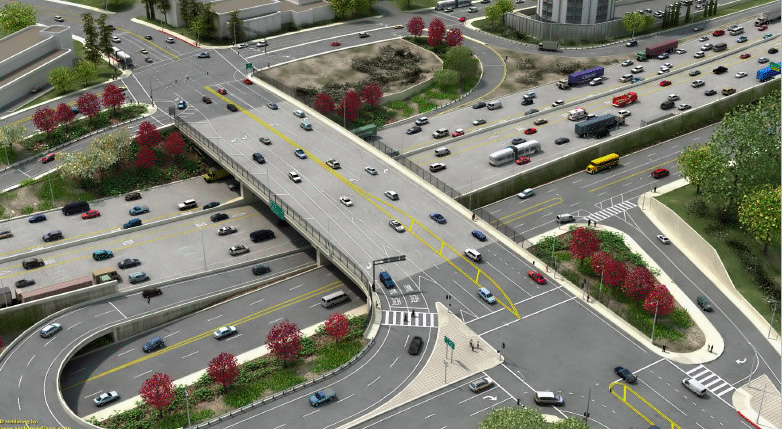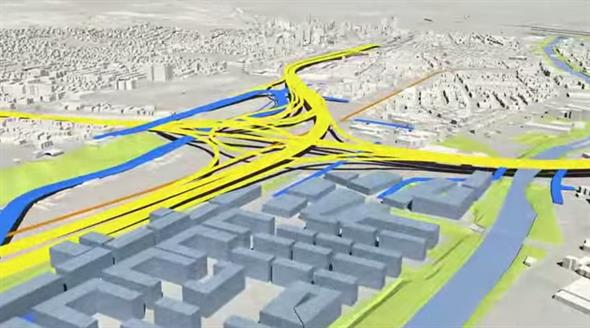Large scale public transportation infrastructure construction projects are notorious for wildly exceeding their budgets and completion schedules. Look at the ‘Big Dig’ in Boston, MA. This project, to reroute the city’s central arterial road via various tunnels and bridges, should have been finished in 1998 and cost $2.8 billion. It was finally completed in 2007 having cost $14.6 billion, several criminal arrests and one death.
However, upcoming projects like Montreal’s Turcot Interchange – Quebec’s biggest ever road construction project, with an estimated budget of over $4 billion – shouldn’t have to endure anything like the same thing, thanks to a new modelling method described by a recent study in Automation in Construction.

This method, developed by researchers at Concordia University in Montreal, is designed not only to help projects like these come in on time and on budget, but to minimize the impact to road users as much as possible.

The reconstruction, redesign and improvement of any heavily used roadway requires very careful planning because of the need to maintain traffic flow. Demolishing an existing interchange and then replacing it is not an option, people will still need to get to work after all. So, a plan is always required to gradually shift traffic from existing segments to newly built ones, without adding too much delay to commuters’ journeys.
The beauty of this method, though, is it’s the first to use stochastic simulation techniques – algorithms that predict random variables – when 3-D modelling highways so generating a 4D representation that can be used to identify and allow for scheduling clashes, peak periods, weather issues, and so on, and come up with the best sequence in which road segments can be constructed, demolished or altered.
Amin Hammad, a professor at Concordia’s Institute for Information Systems Engineering senior author of the study, is keen to emphasize the fact that scheduling any kind of reconstruction work demands a high level of coordination between different work flows.
‘Any delay in the work on one segment might impact the work on another, which ultimately results in delaying the whole project and augmenting the cost,’ he says, pointing out that this method is useful in all kinds of construction projects, beyond just road and infrastructure. ‘The simulation methods we’ve developed help contractors analyse the schedule and eliminate the risks.’
‘This parallel coordination of construction and demolition activities with traffic flow is essential to the success of these projects,’ he continues, going on to illustrate how it’s most effective ‘our new modelling method uses a 4D approach, taking into account the three normal space axes, plus time, to coordinate the traffic phasing with the demolition and construction of the old and new segments, respectively.’
For the residents of Montreal, who are expecting to deal with delays through to 2020 thanks to the huge construction project at the earliest, as well as the rest of the world’s road using public, research into this new projection method should save vast amounts of time and money.

